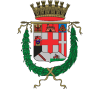Two itineraries, curated by the Cultural Association APS TERRITORI® Narrative Italian Landscape, lead us to the rediscovery, respectively, of the artistic heritage preserved inside the Basilica del Santo and the works of art of Donatello and his students in the city of Padua.
Discovering the Basilica of the Saint
“The lives of the most excellent painters, sculptors and architects” is the precious testimony of the first art historian par excellence, Giorgio Vasari. In writing this Bible of Italian art and artists, Vasari travelled far and wide Italy during two great journeys, in 1541 and 1566, during which he visited Padua on both occasions, in light of his primary role in the field of art.
In his description of the works of art in Padua, Vasari paid particular attention to those of Donatello, so much so as to repeat the exact indication in the two prints of the famous book.
This VASARIAN ITINERARY® dedicated to the Basilica of the Saint touches also the equestrian sculpture dedicated to the venture captain Erasmo da Narni known as the Gattamelata, although it is located in the adjacent area, but part of the Antonian complex.
The visit follows the guide to the Basilica of Father Vergilio Gamboso O.F.M. Conv. of 1966, published 400 years after the presence of the Grand Ducal artist there.
Book your Basilica del Santo tour
To the rediscovery of Donatello and his students
As already mentioned, in his description of the works of Padua Vasari paid particular attention to those of Donatello, so much so as to repeat the exact indication in the two prints of the famous book.
Vasari mentions in Padua as the work of Donatello the Four Miracles of Sant’Antonio and the Deposition from the Cross of the Saint, the Equestrian Monument to the Gattamelata and the Horse of Casa Capodilista.
To create a path with other works can be added two works by his students such as the Monument Roccabonella del Bellano in San Francesco and the altarpiece in terracotta by Pizzolo and Giovanni da Pisa at the Eremitani, which echo the original Donatellian idea of the Altar of the Saint; in addition can be inserted the Crucified Christ preserved in Santa Maria of the Servants and recently attributed to Donatello.
The guided tours last about two hours.












